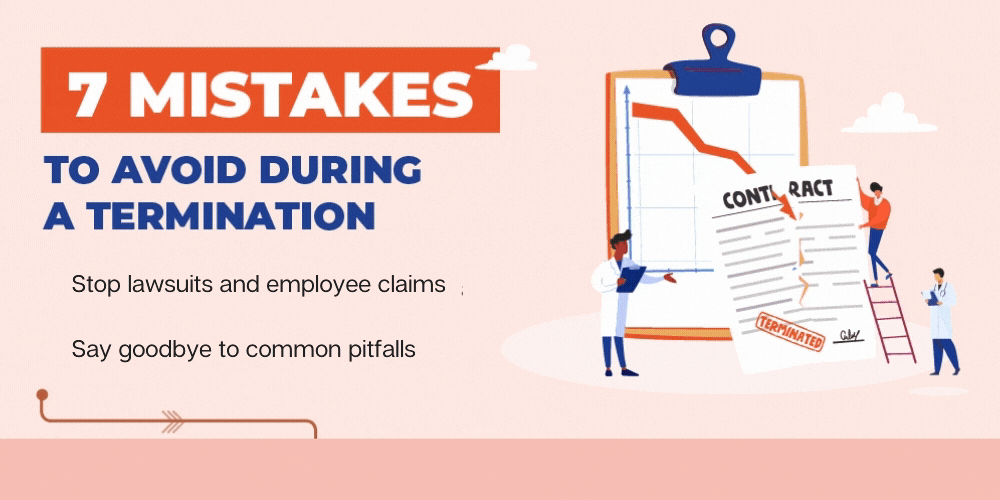UPDATED 12/5/24
It’s unfortunate that, on occasion, a team member may fail to come to work for an extended period of time without explanation.
This unexcused absence puts significant strain on other team members, can negatively impact patient care, and can make it difficult for your practice to respond to a medical emergency.
For dental, optometry, or other medical practice managers, when should they deem the job abandoned and hire a replacement? Fortunately, you can prepare for this scenario by having a clear practice policy. When the circumstance arises, specific steps exist to protect your practice and fulfill your obligations to the employee.
At HR for Health, we know that you want to retain your top talent. Learn more about job abandonment below. Then, contact us to discover how we can help you position your practice for success.
.
What Is Job Abandonment?
A team member may fail to report to work for many reasons. However, abandonment has a specific definition: the individual does not come into the practice and does not communicate regarding the absence with the practice leader. This employee also doesn’t request leave. The “no show, no call” must last multiple consecutive days to qualify as job abandonment. Many practices specify that job abandonment occurs after two days of no contact. To ensure this is clear to all your employees, it’s best to outline it in your employee handbook.
Before moving forward, there are a few things you need to know. Learn more about emergency leave and the employment litigation risks that arise first. Now that you understand this, you can move on to dealing with job abandonment as outlined below.
Recommended Resource
Steps To Prepare For and Handle Job Abandonment
Even if it appears someone has abandoned their job, the practice leader, manager, or employer should follow certain steps before recruiting a replacement. After all, there may have been an emergency. The team member may have been unable to come in or communicate through no fault of their own.
Thankfully, it’s pretty easy to prevent this kind of miscommunication. You need to set expectations in writing concerning topics like communication, reporting to work, and arriving on time. That way, everyone will try to keep in touch — even during a crisis.
The company policy should also clearly outline absenteeism so team members know the risks of not showing up to work. This applies to many medical practices, including dental offices, optometry clinics, physical therapy practices, pharmacies, and others.
Ensure that your employee handbook covers essential topics like attendance policies, an absence policy, a job abandonment clause, and actions that may lead to employee or voluntary termination.
Returning to work has been particularly complex during the global health crisis. HR for Health can help you navigate these issues. Here’s a step-by-step guide to managing a situation that may be job abandonment.
Step 1: Outline Your Job Abandonment Policy
Include a job abandonment policy in your employee handbook. This is essential for two distinct reasons.
- First, it provides a transparent, easy-to-follow guideline for team members. It removes the possibility that an employee may appear to abandon their job out of a simple misunderstanding.
- Second, practice leaders can apply a policy fairly, free of personal feelings or emotions. A policy is an objective expectation.
Also, recall that punctuality and attendance are closely linked to job abandonment. Your employee handbook should have a clear policy on these issues. List essential details, like the number of “no call, no show” days that would result in an unexplained absence where an employee abandons their job, along with who to call if a team member has a personal emergency or otherwise cannot come into work on a particular day. How is this handled if a team member needs time off on short notice? This is another topic that should be clear from the beginning.
Recommended Reading
What’s the Difference Between Termination vs. Resignation?
Step 2: Reach Out to the Employee
If an employee doesn’t come to work and doesn’t communicate, the practice leader should reach out and try to contact the employee each day that the employee does not report to work. Use the phone number and email you have in the employee’s file. Try to use other methods of communication (e.g., text) if phone and email don’t work, and be sure you document every attempt to reach out to the employee. These situations are why it’s also a good idea to have alternate contact information in case the first is unsuccessful.
Remember to stay considerate and open-minded. An emergency could be the underlying reason the employee isn’t at work. An emergency involving a family member could explain why the employee didn’t promptly request a leave of absence. Choose your words with care. Document the date and time of each contact attempt for the employee record. In your voicemail and email, leave a number where the employee can reach you if they don’t have the information on hand. You can also learn about employer obligations before moving forward with the next steps.
Consider all the facts before you resort to the termination of employment, particularly to ensure you’re acting by the Family Medical Leave Act (FMLA). After all, the team member may have a reasonable explanation for their absence, and you want to protect your practice from a wrongful termination lawsuit.
Step 3: Process Job Abandonment as a Resignation
Suppose you still hear nothing from the employee, and the time outlined in your employee handbook has passed. In that case, you can determine that the employee has opted for voluntary resignation. If the team member is in a protected class by age, short-term disability, pregnancy, or other factors, consult an HR specialist or lawyer before taking legal action. You may have additional obligations to fulfill for this individual.
For employees NOT in a protected class, fill out the required resignation paperwork and complete the following:
Mail the employee a final paycheck and two copies of all relevant forms. Enclose a stamped return envelope so the employee can easily sign each form and mail it back to the practice. Include at least the following forms:
- Change in Relationship. This form should quote the job abandonment policy in your employee handbook.
- Final Paycheck Acknowledgement. This confirms that the former team member has received outstanding payments and other entitlements.
When you mail the final paycheck, send it with delivery confirmation to let the employee know the documentation has been received.
When you’re ready to hire a new employee, HR for Health can help you with interview guidance, application documents, onboarding, and the termination process, including offering job abandonment letter templates and termination letter templates. Read our FAQs here.
Recommended Resource
Understanding the Financial and Operational Impact of Job Abandonment
The financial and operational impact of job abandonment can be significant. A few potential impacts that you should prepare for include:
Costs of Rehiring and Onboarding
When an employee abandons their job, the costs of rehiring and onboarding a replacement can be significant. Recruiting new staff involves advertising expenses, time spent reviewing applications, and conducting interviews. Once a candidate is selected, onboarding and training require additional resources, including mentorship from existing staff and possible overtime pay. These expenses can strain the budget of a medical practice, especially smaller ones.
Operational Disruptions (e.g., Patient Care Delays)
Job abandonment can lead to operational disruptions that directly affect patient care. With one less team member, schedules may need to be adjusted, resulting in longer patient wait times. Critical tasks might be delayed or overlooked, compromising the quality of care provided. In emergencies, the absence of a key staff member could hinder the practice’s ability to respond effectively, potentially endangering patient health.
Strain on Remaining Staff, Potentially Leading to Burnout
The sudden departure places an additional workload on the remaining staff, who may need to cover extra shifts or take on unfamiliar responsibilities. This increased pressure can lead to stress and fatigue, raising the risk of burnout among team members. Over time, morale may decline, and the practice’s overall productivity could suffer, potentially leading to higher turnover rates.
Top Reasons for Job Abandonment in Medical Practices
Understanding why employees abandon their jobs can help practices implement prevention strategies. Here are some common reasons:
- Workplace Stress and Burnout: High-pressure environments with excessive workloads can overwhelm employees. Staff may feel compelled to leave abruptly without adequate support to escape the stress.
- Poor Management Practices: Lack of communication, recognition, or support from supervisors can lead to dissatisfaction. Employees may abandon their positions if they feel undervalued or ignored.
- Unresolved Workplace Conflicts: Ongoing conflicts with colleagues or management that aren’t addressed can create a hostile work environment. Employees might leave without notice to avoid further confrontation.
- Lack of Career Advancement Opportunities: Employees may become disengaged when they see no path for growth. This stagnation can prompt them to seek opportunities elsewhere, sometimes without proper notice.
- Inadequate Compensation and Benefits: Feeling underpaid or lacking essential benefits can lead to dissatisfaction. Financial pressures may push employees to leave suddenly for better-paying positions.
- Personal or Family Emergencies: Unexpected personal crises can force employees to prioritize their personal lives over work. They may abandon their jobs to address these emergencies without flexible leave policies.
- Misalignment with Organizational Values: If employees feel that their values don’t align with the practice’s culture, they may leave abruptly. Ethical or moral disagreements can be a significant factor.
By recognizing these factors, medical practices can proactively address underlying issues. Implementing supportive policies and fostering a positive work environment can reduce the incidence of job abandonment.
Communication Best Practices to Avoid Misunderstandings
There are several best practices that you should follow to avoid potential misunderstandings. They include:
Regular Check-Ins with Employees to Gauge Their Satisfaction and Well-Being
Scheduling regular one-on-one meetings with employees helps managers stay attuned to their team’s morale. These check-ins provide a platform for employees to voice concerns, discuss challenges, and receive feedback. Proactive communication can identify potential issues early, allowing timely interventions to prevent dissatisfaction from escalating.
Setting Expectations for Emergency Communication (e.g., Providing Backup Contact Methods)
Establishing clear protocols for emergency communication ensures that employees know how to contact each other during unforeseen circumstances. Multiple contact methods, such as personal phone numbers or emergency email addresses, facilitate timely updates. Outlining these expectations in the employee handbook helps prevent misunderstandings when emergencies arise.
Training Managers to Respond Empathetically to Personal Emergencies or Crises
Empathetic leadership is crucial in supporting employees through personal difficulties. Training managers to respond with understanding encourages open communication. When employees feel their circumstances are handled with compassion, they’re more likely to remain engaged and less likely to abandon their positions without notice.
Legal and Compliance Checklist for Job Abandonment
Navigating job abandonment requires adherence to legal standards to protect the practice and the employee’s rights. Here’s a detailed checklist:
- Ensure Compliance with Federal Laws:
- Check State-Specific Regulations:
- Research state labor laws that may provide additional employee protections beyond federal requirements.
- Be aware of any mandatory notice periods or specific procedures for termination due to abandonment.
- Determine if the Absence Qualifies Under Leave Protections:
- Evaluate Eligibility: Verify the employee’s length of service and hours worked to determine FMLA eligibility.
- Assess the Situation: Consider if the absence is due to a qualifying reason, such as a serious health condition or family emergency.
- Documentation Requirements for Termination:
- Record Communication Attempts: Keep detailed records of all attempts to contact the employee.
- Document Policy References: Cite the specific job abandonment policy from the employee handbook in all correspondence.
- Prepare Termination Letter: Include reasons for termination and reference the lack of communication.
- Consider Protected Classes Before Action:
- Identify Protected Status: Determine if the employee belongs to a protected class (e.g., age, race, gender, disability).
- Avoid Discrimination: Ensure the termination decision is based solely on job abandonment and not discriminatory factors.
- Consult Legal Counsel: Seek legal advice if there’s any uncertainty regarding the employee’s protected status.
- Provide Final Pay and Benefits Information:
- Calculate Final Wages: Include any owed wages, accrued vacation, or benefits.
- Follow State Laws: Adhere to state-specific timelines and methods for delivering the final paycheck.
- Maintain Confidentiality:
- Protect Employee Privacy: Limit information shared with other staff members regarding the termination.
- Secure Records: Keep all documentation confidential and stored securely.
Following this checklist, practices can ensure they are legally compliant and reduce the risk of wrongful termination claims.
Steps to Rebuild Morale and Trust After Job Abandonment
Job abandonment can leave a team feeling unsettled and overworked. Proactively restoring morale is essential for maintaining a positive work environment. Here are seven steps to help rebuild trust:
- Open Communication: Hold a team meeting to address the situation transparently, without sharing confidential details. This helps prevent rumors and reassures staff that management handles the issue responsibly.
- Acknowledge the Extra Effort: Recognize and appreciate the additional work done by the remaining staff. Expressing gratitude boosts morale and reinforces a culture of recognition.
- Provide Support Resources: Offer access to counseling services or stress management programs. Supporting employees’ well-being demonstrates the practice’s commitment to their health.
- Redistribute Workloads Fairly: Evaluate tasks and ensure that responsibilities are evenly distributed. This prevents burnout and shows consideration for employees’ capacity.
- Solicit Feedback: Encourage team members to share their thoughts and suggestions on improving the workplace. Involving them in solutions fosters a sense of ownership and engagement.
- Plan Team-Building Activities: Organize events or workshops to strengthen team cohesion. Positive interactions outside of regular work can rebuild trust and camaraderie.
- Review and Improve Policies: Use the experience to assess current policies on communication and attendance. Implementing improvements can prevent future occurrences.
By implementing these steps, practices can mitigate the negative impact of job abandonment. A focused effort on rebuilding morale helps maintain productivity and fosters a resilient team ready to move forward.
How To Proactively Prevent Job Abandonment
It pays to do all that you can to take preventative measures to avoid unexcused absences and termination of employment when an employee abandons their job. Before you’re faced with that, consider taking the following proactive steps to prevent the employee from abandoning the job in the first place.
• Ensure you have a job abandonment policy in place.
• Conduct employee performance reviews on a regular basis.
• Keep employees motivated with a positive company culture.
• Create surveys to allow employees to provide feedback.
• Offer time off for medical leave and vacation time.
• Enhance team scheduling practices.
Job abandonment is different from a no-call, no-show absence, which means an employee typically returns to their job within a specified number of days even if they place no phone calls. Job abandonment, where an employee disappears and never comes back, causes a great strain on an organization. While you can skip disciplinary steps and go right to the termination procedure, check FMLA and disability laws. Different scenarios and medical reasons could inhibit an employee’s intention of returning to work.
Recommended Reading
How to Conduct a Compliant Termination
Optimize Your HR Processes with HR for Health
Medical professionals prioritize serving patients and families. They rely on their team members to contribute to an efficient and welcoming practice. It’s increasingly important to have professional HR support for issues that arise. Job abandonment is one of those HR challenges that HR for Health can make easier. To learn about our solutions, including an employee handbook customized to your medical practice, as well as performance management and time and attendance tracking software, talk to us for an HR consultation today.




